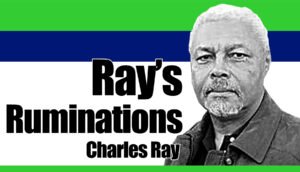
This article is based on the circumstances surrounding the discovery of the ancestry and royal lineage of Sultan Omar Kiram, a.k.a. Captain Vicente Austria. A gripping, interesting, and one-of-a-kind account of the colorful life of an otherwise ordinary man, the life story of Captain Austria underscores the fact that he was the only Sultan among the various Maranao Sultanates who was brought up and educated in the Christian way, and was a war veteran fighting the Moro outlaws in Mindanao.
Muslim-Christian relations has, over the years, become volatile and often unpredictable. At times, because of a lack of understanding of the diverse cultures of each one as well as the stereotyping that often typifies how people are regarded, there still seems to be a divide between Christians and Muslims, although they are all Filipinos.
It is imperative, therefore, that every citizen, Christians and Muslims alike, must learn about various aspects of Muslim culture and history, not to mention the intricacies of their own institutions of power, authority, and leadership. Consequently, out of such effort, we can hope to promote a culture of peace and unity in the country.
Lanao, from where Sultan Omar Kiram comes from, is dubbed as the “land of one thousand and one sultans.” Little is known, though, of its sultanates outside the Maranao world.
Moreover, in Lanao today, it has been reported that there are engineers, medical doctors, lawyers, mayors, vice-mayors, councilors, governors, vice-governors, scholars, military officers, government and private employees, teachers, businessmen, theologians, the unschooled, fanatics, certified public accountants, farmers, fisherfolk, and many others coming from diverse backgrounds who are Sultans.
The story of how he discovered his lineage and pedigree is a revelation by itself because of all the Sultans in Lanao, Captain Austria distinguished himself for the following reasons: 1) he was the only Sultan with a Christian upbringing; 2) he was Christian-educated; and, 3) he was a war veteran fighting the Moro outlaws in Mindanao.
Then, without rhyme or reason, he was discovered to be the long-lost heir of the Sultanate of Uyaan.
Available documents and printed materials were used which, fortunately, did not pose a hindrance as the family members and friends of Captain Austria were able to provide readily published materials and other vital documents, not to mention their vivid memories of the Sultan.
The young Omar Kiram was born in the early morning hours of April 24, 1914 in the Onayan Sultanate of Lanao, Philippines to Sultan Omar Kiram and his wife, Bai Ampaso Saomay Mindalano, who were both descendants of the royal family in the Sultanate of Onayan.
At the time of his birth, the Americans already ruled and administered the Moroland, including Lanao. When the Americans occupied Lanao, the Maranaos were divided. Some accepted the Americans’ presence, while others did not. It was a period characterized by lawlessness, kidnappings, and hostilities.
The young Omar Kiram was barely 6 years old in the early part of the century when American troops intensified their campaign against hostile Maranaos. The battlecry at that time was “A dead Moro is a good Moro.”
In one of the encounters, the old Sultan was killed and his family was torn apart. The Americans killed all the men who were captured, and the collaborators brought all the women and children to Dansalan (now Marawi City) and turned them over to the powerful datus who, in turn, sold them in the public market.
When the young Omar Kiram was forcibly taken from his nurse Ishraida, he was sold together with other children in the public market of Dansalan (now Marawi City). It was a traumatic experience for most of the children, but not for the young Omar Kiram who did not even cry, unlike the other children.
Such bravery of a young boy caught the attention of Sgt. Gil Austria, a retired American Scout who concluded that the boy was no ordinary boy given the situation he was in. Sgt. Austria then decided to buy the boy’s freedom from the powerful datus in the amount of 22 silver pesos.
The young Omar Kiram was then brought to the house of Sgt. Austria in Camp Keithley, Marawi City, Lanao del Sur. He was given a Christian name by his adoptive parents and was christened Vicente S. Austria. Sgt. Austria, who hailed from Vigan, Ilocos Sur, and his wife, the former Lucia B. Suico, a native of Mandaue, Cebu, did not have children. Thus, the arrival of the young Omar was heaven-sent for them.
As he was growing up, Vic, as how he was called by friends and associates, embraced Christian ways and manners. Unfortunately, Sgt. and Mrs. Austria passed on without ever revealing to Vic his true identity and ancestry.
In 1922, Vicente attended elementary school in Camp Keithley, an American military camp located in Dansalan, and graduated in March 1928. Vicente went to the Lanao High School which had American personnel in their staff.
As a young student, he established friendship with schoolmates and neighbors in Camp Keithley, one of whom is Major Rustico Paralejas who arrived in Camp Keithley with his mother, Mrs. Pelagia Celebre Paralejas, a widow, on April 1923 when he was only 4 years old. Major Paralejas got acquainted with Vicente in Camp Keithley through his first cousin, the son of Magdalena Silayan, who was a classmate of Vicente.
According to Major Paralejas, Vicente was five years his senior. He recalled that during his elementary years, Vic was very popular in school because when there was no film to be shown in the movie house, they converted it into a boxing arena where Vic was the best boxer in his age level, carrying it through his high school years.
Vicente had a well-built, athletic body, standing at 5’10” with a fair complexion and Arabic facial features. He was an artist and specialized in painting, making him popular among the American teachers and the American ladies. Major Paralejas and Vicente would go together to the Evangelical Church to attend Sunday services.
Vicente later went to Manila to pursue his studies, enrolling at the Adamson University taking up Bachelor of Science in Chemical Engineering, which he graduated from in March 1937.
After finishing his studies at Adamson University, Vicente took a vacation in Mumungan, Lanao del Sur to look at his farm that was located near the American colony. His adoptive parents had died and the house in Camp Keithley was already turned over to the American employers. Because he was an old friend of the Kellys, he was persuaded by the latter to stay with them during his visit to Lanao.
Nellie Kelly was just 15 then. Vic was treated like a regular member of the family. Although he was like a brother to the Kelly sisters, love blossomed between Vic and Nellie.
In 1938, Vic left for Japan to specialize in ceramics. As a chemical engineer, he chose ceramics as his area of specialization because of his inclination as an artist, where he can showcase his artistic abilities through painting using ceramics as a medium. He returned to the Philippines in the early part of 1940 and was invited by Silliman University in Dumaguete City to give lectures and training to students in ceramics. He was highly recommended by his American friends to the American teaching personnel at Silliman University, the first Presbyterian school established in the Philippines in 1901, which was the reason why he came to Dumaguete City.
After a few months of training in Dumaguete City, he had to hurry to Mumungan, Lanao del Sur, when he received a letter from the Kelly family stating that Nellie was ill. Before anyone could air any opposition, Vic and Nellie became sweethearts, which was received very favorably by the American community as they liked Vic for Nellie.
On July 26, 1940, Nellie became Mrs. Vicente Austria at an elaborate wedding ceremony held at the Mumungan Evangelical Church, one of the biggest weddings in the history of Lanao.
In the entire duration that Nellie was married to Vicente, she had always thought that her husband was a Christian. Vicente himself never knew that he was a successor of the Sultanate of Uyaan.
Although this article merely touches on the early life of the long-lost Sultan of Lanao, Omar Kiram a.k.a. Captain Vicente Austria, we are hopeful that forthcoming articles may be written specifically about the Sultan’s achievements and his contributions as a public servant. | NWI




